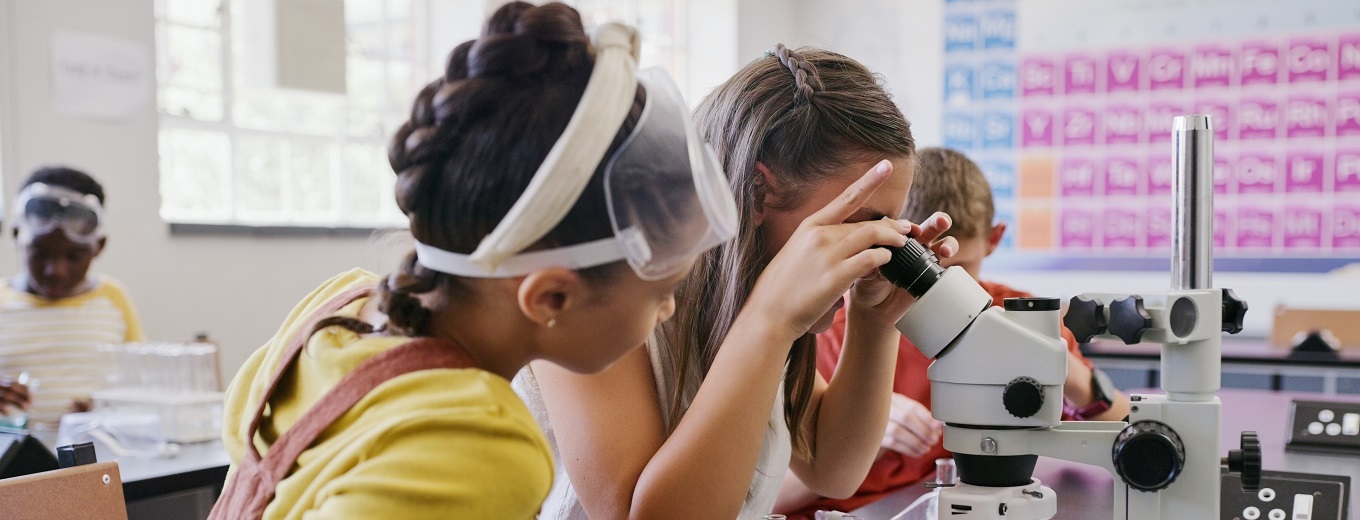Science, Mathematics, Engineering and Technology (STEM) learning environments should be equally accessible to everyone. However, barriers still exist.
Diversity and inclusion is a key priority of the EU across different strategies, policies, and programmes in the EU, such as for example Women’s participation in STEM (Action 13) in the Digital Education Action Plan (DEAP). In October 2022, Scientix, the community for science education in Europe, organised in collaboration with the projects SpicE – Special Education STEAM Academy and Far Beyond the Barriers an online Science Topics Networking Seminar (STNS) to address these issues in the field of science education. 15 stakeholders of the STEM education sector were invited as experts to discuss and exchange about challenges and support for inclusive learning environments. As a result, an observation paper was published on 16 February 2023 presenting the key takeaways from the seminar.
The understanding of what an inclusive learning environment means and what the current barriers are, is important and changing. There has been a shift from inclusive education for students with disabilities to an inclusive learning environment which considers the concept of equal education for all students regardless of their background in terms of gender, social status, and other characteristics. The report, for example, recommends accepting failure as a natural process of STEM learning or the promotion of collaborative exploration with other classmates. However, teachers might sometimes feel overwhelmed with the demand for flexibility and adaptability and require training and guidance to increase their feeling of competence. This need for adequate training is recognised by the Teacher Education for Inclusion (TE4I) project investigating the necessary competences of teachers to be more inclusive. Further barriers for an inclusive learning environment in STEM were identified in the seminar which can be of linguistic, technical, or structural nature.
Based on the results of the seminar, the report makes recommendations for a more inclusive STEM education. The first recommendation proposes the development of a personalised strategy for each student. A more individualised approach to teaching, while keeping the whole classroom in mind, could be achieved through adequate strategies, peer support, an appropriate infrastructure and supporting tools. The recently launched SpicE – Special Education STEAM Academy project aims to develop a Competence and Education Framework and a training programme for STEAM (including arts) for primary education students with mild disabilities. Moreover, the STEM School Lab (SSL) service offered by Scientix is a self-assessment tool to support schools in their strategies for a more inclusive STEM education. The LEAD! project, funded by the Erasmus+ programme, is another example promoting social inclusion of students with specific learning disabilities.
The second recommendation concerns adequate teacher training ensuring sufficient competence for the challenges of an inclusive education landscape in STEM. There are a number of project activities at the EU level addressing this issue. The Erasmus+ programme funded INSCHOOL project provides training of current and future teachers to adopt more inclusive education practices. CHOICE is another project supporting the approach of diversity and collaboration between students with or without disabilities and focuses on innovative open education resources. Furthermore, the European Schoolnet (EUN) offered in 2020 an extensive open online course called Designing for Personalisation and Inclusion with Technologies (DEPIT) to promote effective working methods in the classroom including the support of the DEBIT APP. Switzerland is official member of the EUN network where it is represented by Movetia.
Further recommendations concluded by the seminar are the use of assistive technology and artificial intelligence (AI) to facilitate the adaptation of students with special needs; the elimination of barriers such as gender inequality or socio-economic obstacles; development of policies to support inclusivity; and collaboration with parents and local communities.

